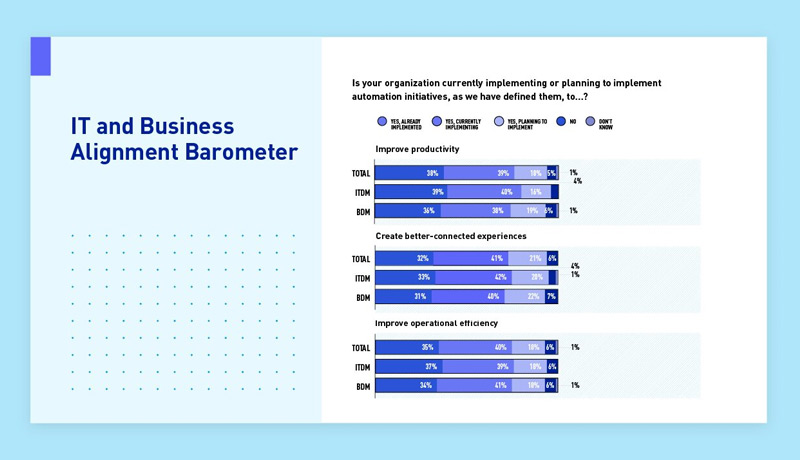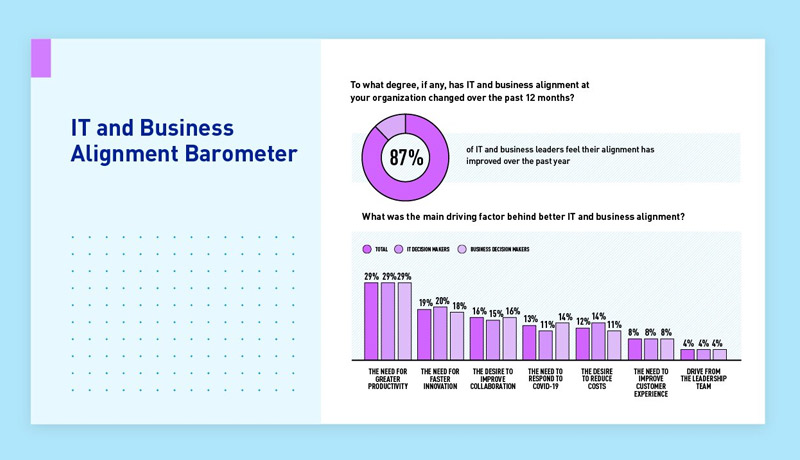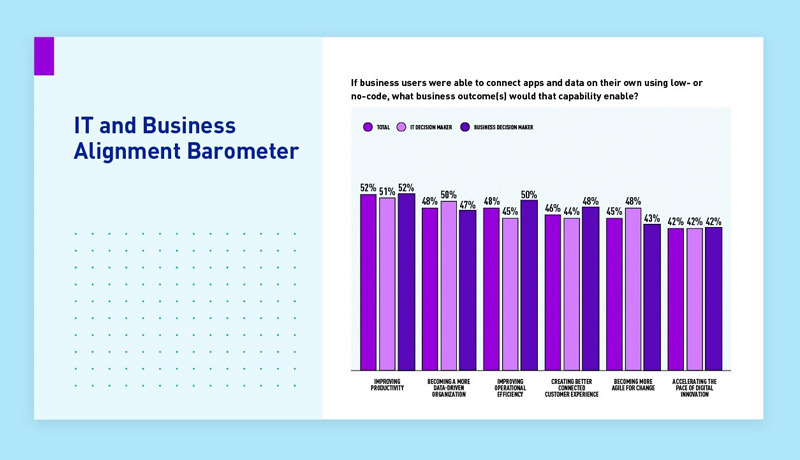
70% of automation projects are hampered by security concerns and data silos, while organizations are looking for automation to increase their efficiency and output, MuleSoft states.

However, the IT and Business Adjustment barometer of MuleSoft has also shown companies opportunities to address those challenges and allow their organizations to innovate faster. IT and business teams working closely together can reduce or even eliminate silos, significantly reducing time to the market.
The report shows that in the past 12 months, the alignment of IT and company has improved almost nine in ten (87 %) and has produced several advantages, including improved collaboration (64 %), operational performance (58 %), and increased customer experience (54 % ).
“IT and business alignment is no longer ‘a nice to have – it’s essential to meeting the urgency of today’s digital imperatives,” said Brent Hayward, CEO, MuleSoft.
He also said, “Delivering innovation fast requires reusable, secure assets the business can self-serve to quickly launch new digital experiences, products, and services. As IT and business teams drive automation initiatives forward, empowering more people – developers and non-developers alike – to connect data and apps in a secure yet frictionless way will be key to organizations’ future success.”
The MuleSoft IT and Business Alignment Barometer also highlights the business priorities and challenges in the following 12 months, based on a global study by 2 400 IT decision-makers and decision-makers (BDMs):

With speed, agility, and efficiency, the need to respond to changing market dynamics—and to the need for customers and staff—has never been more important in an all-digital, work-of-anywhere world. Automation has become a growing focus of convenience, speed, and cost reduction for many organizations.
In Organizations report that:

IT and business teams need to co-develop value and keep pace with digitalization to overcome integration challenges and become more agile. IT teams can focus on the production of secure and controlled recyclable assets and allow business teams to integrate these IT-approved assets and serve them more quickly to deliver innovation.
COVID-19 has sparked a new focus on business agility: More than three quarters (78%) of organizations say that it will be extremely important to improve business agility to remain competitive in the future. This is a significant increase from 68%, who said it was a pre-pandemic focus.
IT increasingly drives business outcomes: The majority of businesses (88 %) and IT leaders agree that in the last 12 months, IT has become even more important to drive business performance. About half (48%) say it has become more important “significantly.“
The business recognizes value of integration: In 10 (87 %), nearly nine BDMs feel that enhanced integration helps them to achieve their business goals – 39 % say that it helps them “much.”
Drive agility by empowering business users to create connected experiences: The large majority (86%) of organizations agree that if business users can securely link apps and data to create a connected experience, they will improve their business results. This would make businesses better productive (52 %) and data-driven (48 %), better operational efficiency (48 %), better customer experience (46 %) and more agile (45 % ).
